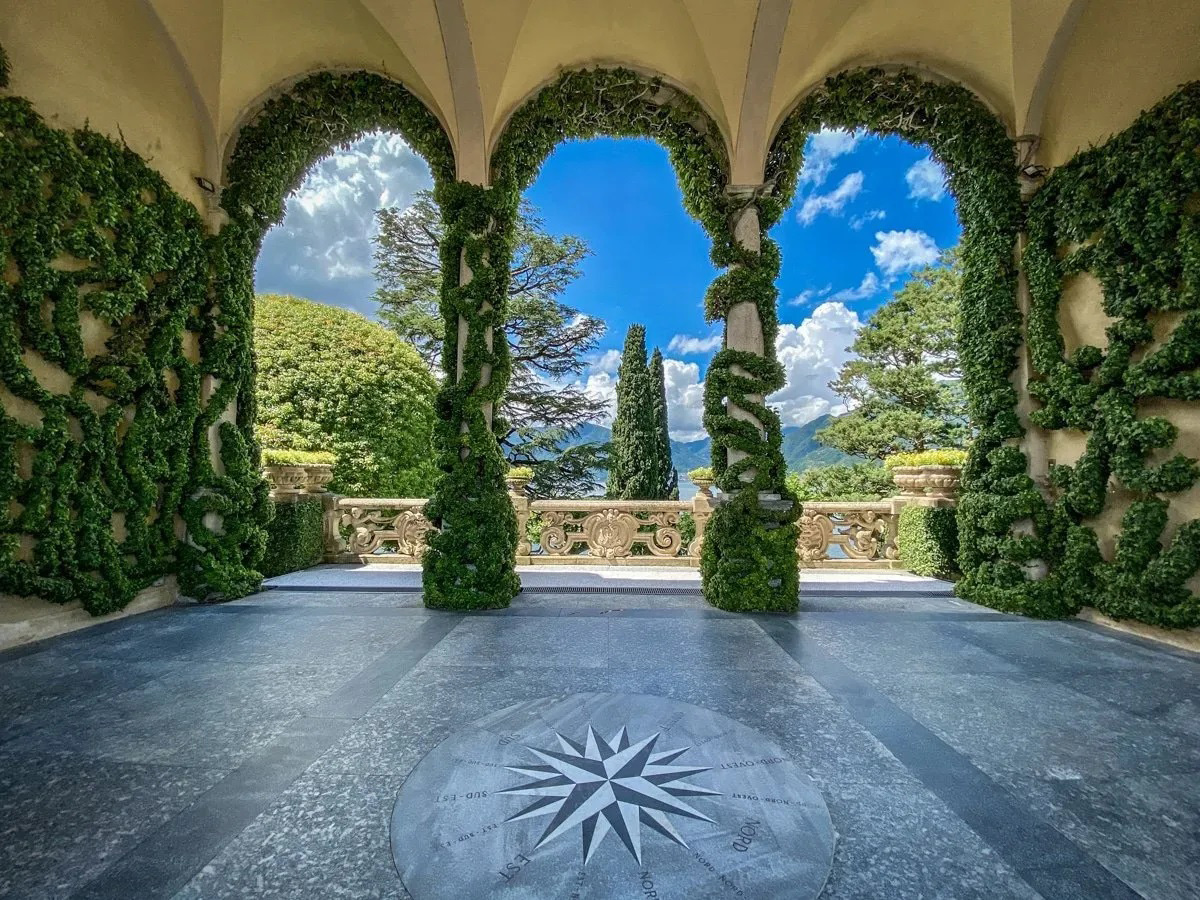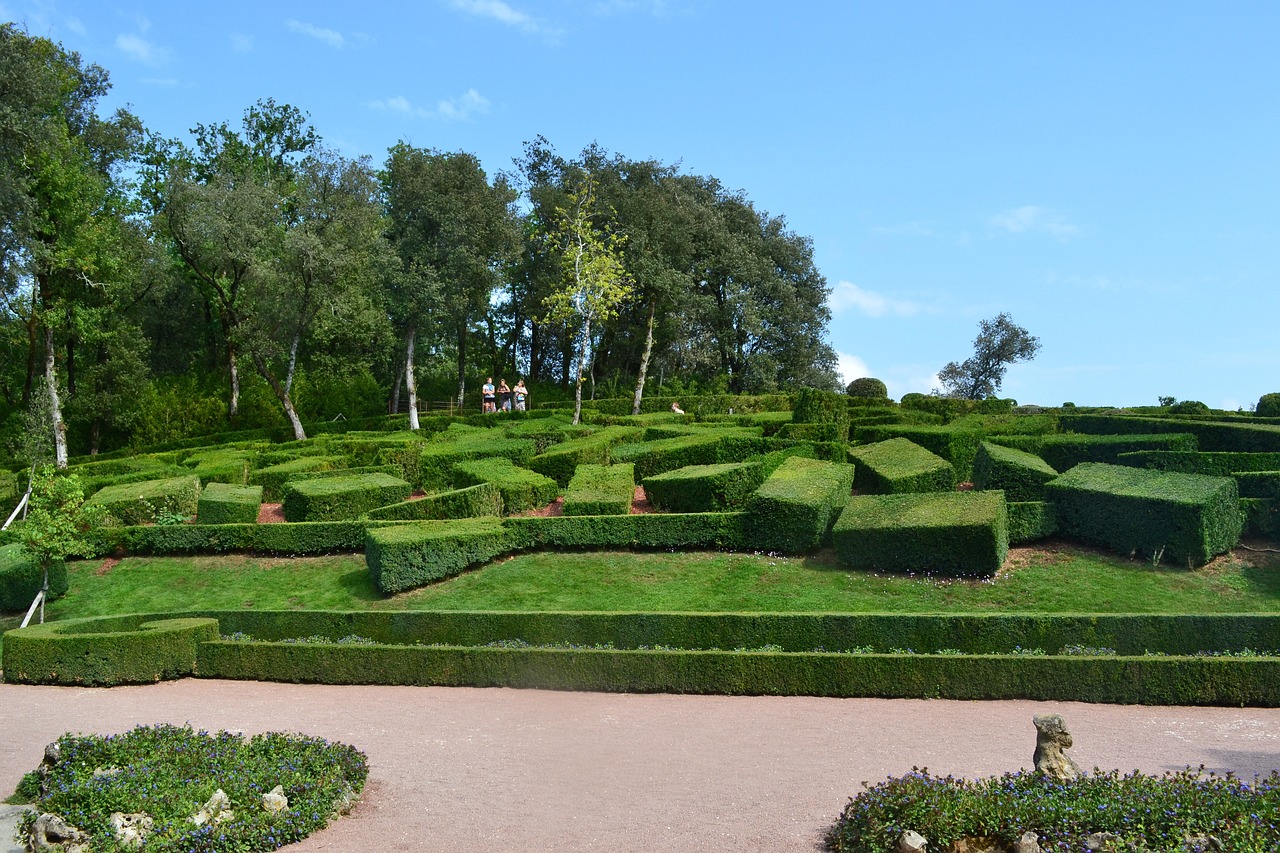In recent weeks we have talked about pruning. A natural continuation seems to us to talk about topiary art.
What is topiary art?
Today it is the art of modeling the foliage of a plant in a geometric or anthropomorphic form.
But what did “Topiary” mean originally?
It is commonly said that topiary art was born in Ancient Rome at the time of Vespasiano.
The word “Topiary” derives from “Topos” which in Greek means landscape and this is absolutely possible.
Guido Giuppini, however, recalls Ermanno Malaspina’s speech at the study conference “Regionis forma pulcherrima” in 2011 in Bologna who considers that “[…] the Lombard and Piedmontese peasants know very well, on their own, that the “topia” is the “pergola”. And that by topiary art we must mean the art of leading plants with strings along wooden structures or of giving them shape with appropriate pruning […]” (G. Giuppini – The Garden of Misunderstandings – Ed. habitus Book that you find told in the related article).
Consulting the interesting article by Elisabetta Pozzetti on the Villegiardini.it website, where she tells the story of this term from the Romans to the 1900s, we discover that the story is much more complicated and perhaps the Romans made their own a Greek word used to indicate work in the garden, identifying it first with those who prune the plants, the gardener, and then generically as a creative act of modifying the plants and a glimpse of the garden.
We trust the experts and, emphasizing the fact that one explanation does not deny the other, we invite readers to cultivate the exercise of doubt, constructive criticism and free thought. There is always an undoubted need, to get an idea, to read as much as possible on the subject.
What is certain is that the art of forcing plants to grow on paths decided by man is certainly very ancient. If in the topiary we also include the binding of plants, we can also find the cultivation of the vine in Egyptian funerary paintings or in the decorations of Hellenic amphorae.
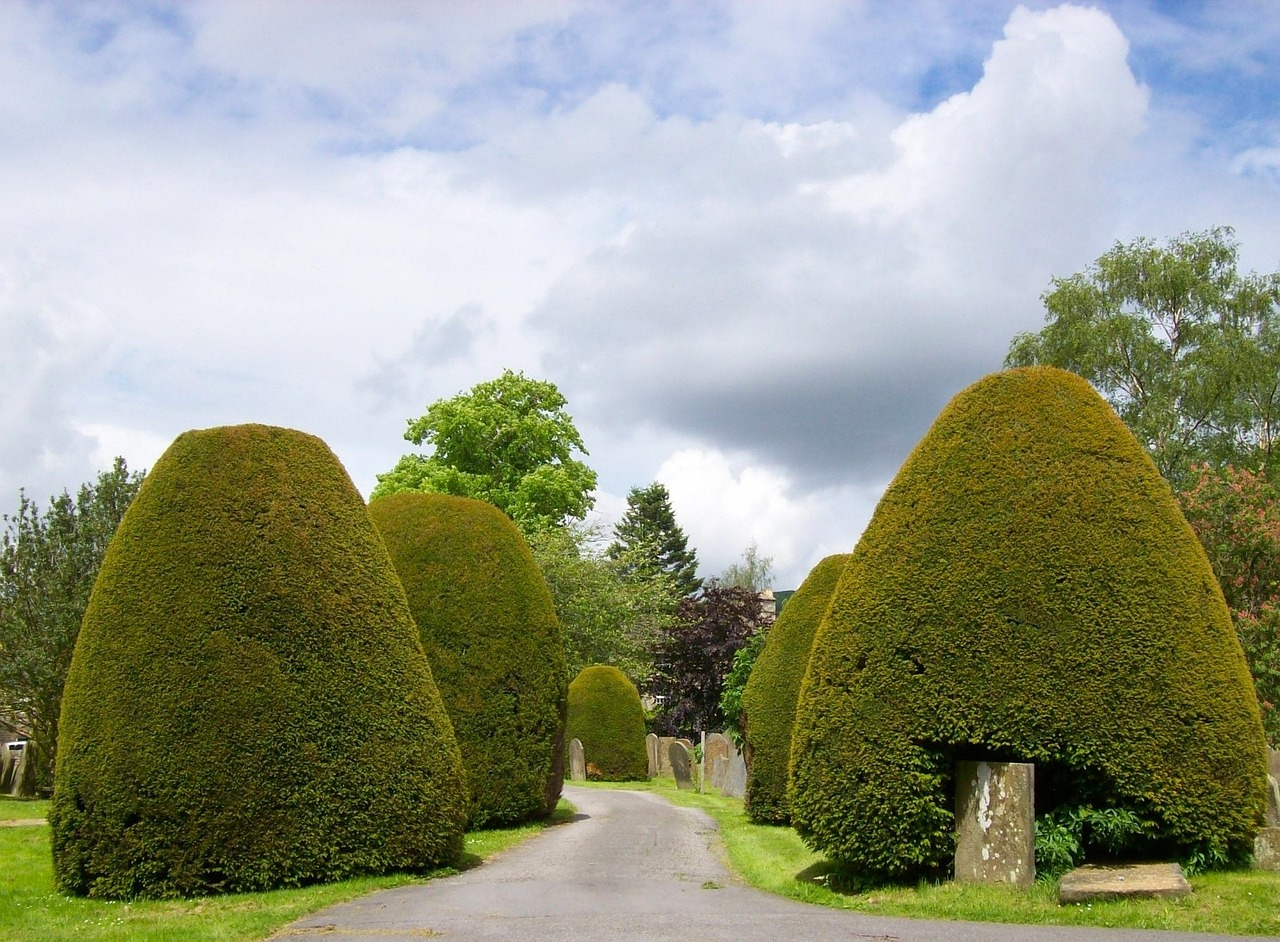
The approaches to creating a topiary form
In fact, in topiary art, three different approaches can be gathered:
The one that cuts hedges and tall trees “in shape”,
the one that prunes a plant following a cage in an iron reticulated shape, eliminating what leaves the shape of the plant,
and that of enveloping branches around a form, then performed with climbing plants.
What plants are used for topiary art?
For this type of pruning we recommend a plant with persistent, rustic and strong foliage that tolerates many prunings well, with dense foliage and slow growth (to reduce the number of prunings). Going in order of magnitude from smallest to largest,
the Timus vulgaris, the Hyssopus officinalis, the Teucrium chamaedrys, the Santolina chamaecyparissus, the Lavandula officinalis, the Myrtus communis, the Rosmarinum officinalis, the Lonicera nitida, the Juniperus pfitzeriana, the Ligustrum jonandrum, the Pinus parviflora, the Ilex cornuta, the Buxus sempervirens e microphylla, the Laurus nobilis, the Cupressus and similar conifers, the Carpinus betulus, the Taxus baccata, the Quercus ilex (leccio).
Even some vines can create topiary effects such as ivy and Ficus repens which you can admire in all its majesty perched on the facade of the Villa del Balbianello on Lake Como.
What are the conditions under which a topiary form can be created?
For a topiary form to be successful, the needs of the plant in terms of exposure, water and soil must be respected. In fact, the continuous pruning creates a stress that can only be tolerated if the living conditions are optimal. Otherwise the plant will strip in more places and more and more until the specimen dies… despite all the attention given to it.
Here are some implementation suggestions. Do not prune the first two years due to the too young age of the plant.
If you want more “fit” plants in the garden, make sure you plant them at the right distance from each other because each plant needs its own space to grow well and withstand pruning.
In tailoring there is a famous saying. “measure 2 times and cut 1”. This is because it is easy to make a bad decision and then cut it wrong, an action for which there is no going back. The same principle applies to the topiary. I would add that if you are wrong in one point you must not try to fix it by cutting further otherwise you will make a hole that will last a whole year.
Always work from top to bottom, from the center outwards and symmetrically: if I cut on one side then I cut on the other too.
And as a last suggestion we advise not to prune from October onwards because in the event of the birth of new buds they would not resist the winter.
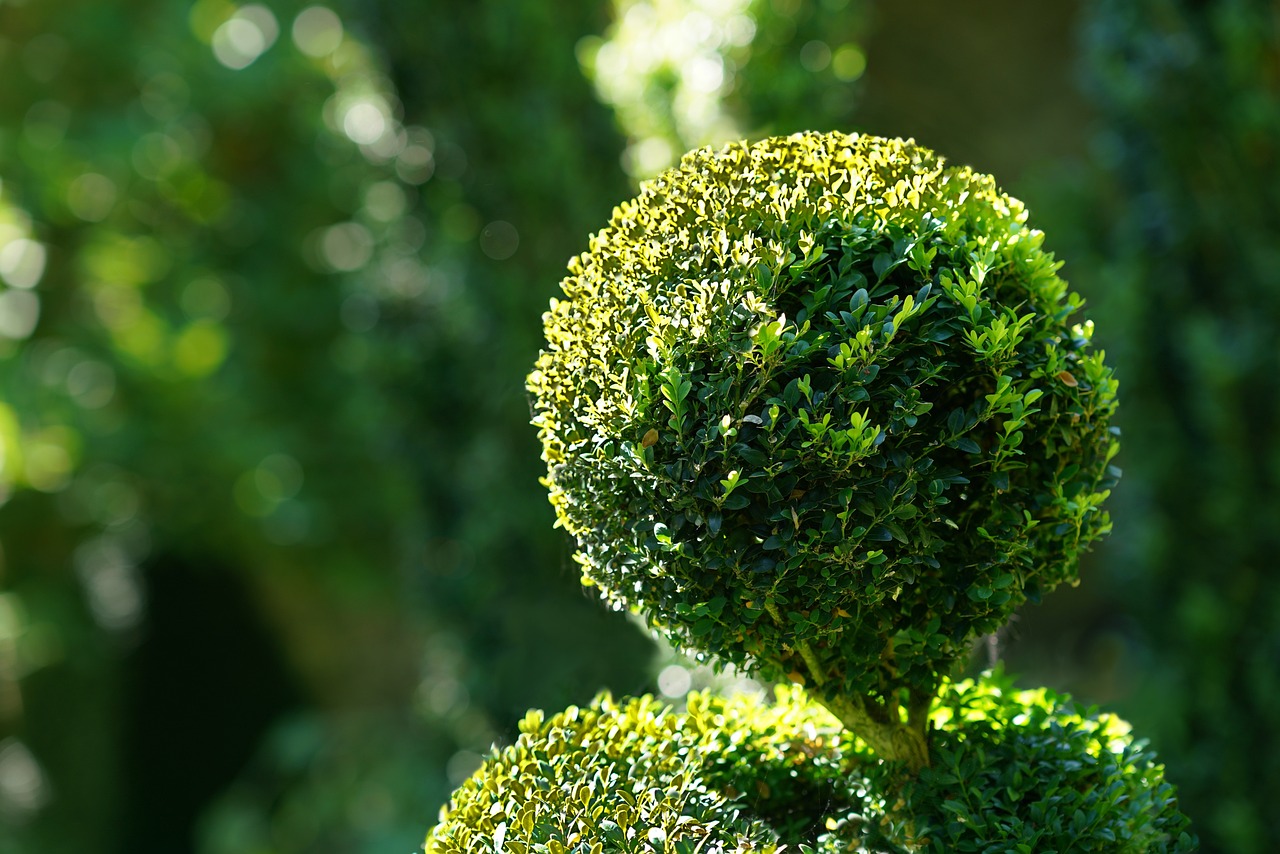
Can you make topiary in pots?
I’ve thought about it a lot and I would recommend just a couple of solutions. You can take a large vase and place a sphere, cone or pyramid cage in the center in which you will grow plants that do not get too big like
the Timus vulgaris, the Hyssopus officinalis, the Teucrium chamaedrys, the Santolina chamaecyparissus, the Lavandula officinalis, the Myrtus communis, the Rosmarinum officinalis, the Lonicera nitida, the Juniperus pfitzeriana, the Ligustrum jonandrum
and around it you will insert small seasonal flowering plants left free.
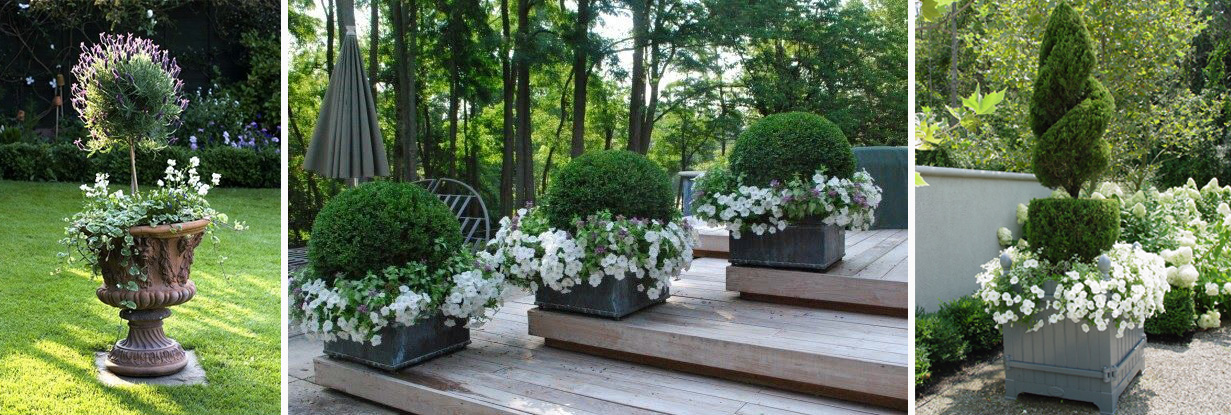
Or different pots
Or, always with 3 or 4 plants of those mentioned above, make a vase or a group of different but harmonious vases that you can put together: the result will be a fragrant group of different colors and textures with an amazing effect [see the Knot gardens (Garden of knots) a garden with a formal design in a square frame, consisting of a variety of plants and aromatic herbs including, in addition to those already mentioned above, Origanum majorana (marjoram), Artemisia abrotanum, Melissa officinalis, Tanacetum balsamita (St. Peter’s Wort), Acanthus (in variety), Malva sylvestris, Matricaria chamomilla (Chamomile), Calendula officinalis and Viola (in variety). An example is Henry VIII’s Hampton Court Privy Garden – 1525].
For the simple shapes, choose the branch or branches of a young plant that will form the nucleus of the green sculpture.
The cages
“If, on the other hand, you prefer complex shapes, use structures and frameworks made of sturdy material, which you can also prepare yourself using, for example, thick iron wire, to which you will have to weave thin metal wire, in order to outline a clearer and more precise. As temporary support to give shape to the frame, garden canes are also fine, while to tie the castings to the structure, use tarred wire. The plant is placed inside the frame. […] It is worth remembering that topiary art requires much more precise pruning than hedges” (eticamente.net)
What tools are used for topiary art?
There are scissors and hedge trimmers on the market that have been created for this type of pruning because they are much more precise and sharper. Find them here.
Inquisitiveness
In the Middle Ages this type of pruning was used by convents which were almost the only ones to keep a garden. The purpose of the garden was purely horticultural and was used for vegetables and fruit. The friars used to limit the cultivation areas with borders of geometrically shaped box hedges and by creating the first labyrinths that symbolized the difficult path that leads to virtue and knowledge.
In the Renaissance the possibility returned for nobles and merchants to have a garden space and in doing so they copied from monastic gardens, as well as from the gardens of the East (but this is another story that you find in a couple of articles on this site) falling in love with labyrinths that become all the rage among the nobles and they want them in their gardens and villas. However, if in the monastic gardens the labyrinths led from A to B without false or multiple paths, for the nobles the labyrinth recovers its playful side by introducing blind roads and places to withdraw.

the garden world advice
Start with manual shears that will help you develop the ability to prune harmoniously. Then you’ll move on to power tools that speed up the job. However, remember that for electric cutting plants it is more stressful and manual cutting is very Zen.
Now on horseback! Work awaits us! Our new wonderful outdoor space is about to be born!
GOOD WORK and … if you have any questions please write to info@mondodelgiardino.com
For the Images we thank Pixabay and in particular kham_me for the social photo, Ольга Фоломеева for the cover, David Mark for the row of cone trunks, Yves for the topiary in front of the estate and the close-up of a pruned sphere, Julia Casado for the large topiary flowerbed, Jacques GAIMARD for the estate garden with fountain, beborghi.com for the Villa del Balbianello, Pinterest for the Knot gardens and for the flame topiary vase, elizabethgracegardens.com for the lavender vase, theimpatientgardener.com for the ladder with the vases, besti.it for the teddy bears, alibaba.com for the cages.




